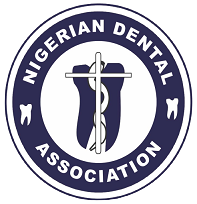`PATTERN OF HISTOLOGIC VARIANTS OF AMELOBLASTOMA IN A SECONDARY HEALTH CARE FACILITY IN LAGOS STATE: A 5-YEAR RETROSPECTIVE STUDY.
DOI:
https://doi.org/10.61172/ndj.v31i1.105Keywords:
ameloblastoma, histologic variantsAbstract
Background: Ameloblastoma is a benign epithelial odontogenic neoplasm which is common amongst the Yoruba ethinc group. The various histologic types have been elucidated.
Aim: This study aimed to assess the prevalent histologic types of ameloblastoma in a Lagos secondary health care facility.
Methodology: A 5-year retrospective review of histopathologically diagnosed slides were retrieved. Data extracted include the age, gender, location, ethnicity and histologic variants were analysed by SPSS version 26. Percentages, ratio, mean, standard deviation and crude odd ratio were determined, and p-value ⩽ 0.05 is considered significant.
Result: A total of seventy-seven histopathologically diagnosed ameloblastoma slides were retrieved. Males were more affected than females in ratio 1.2:1 with the mean age 33.61±13.3. Ameloblastoma was commonest in the third decade of life and more in the mandible than maxilla. Yoruba ethnic group was most affected. The commonest histologic type was the unicystic type with intraluminal subtype accounting for the largest proportion. There was significant association between histologic types and gender (p= 0.037). Crude odd ratio revealed the odds in the unicystic type between male and female {p=0.041; CI=95%, OR=2.649(1.042-6.733)} and in the follicular between male and female {p=0.013; CI=95%, OR=3.855(1.321-11.288)}.
Conclusion: The unicystic histologic type of ameloblastoma was the commonest, occurring more in females and this was followed by the follicular histologic type which occurred more in males in this Lagos State secondary health care facility.
Downloads
Downloads
Published
Issue
Section
License
Copyright (c) 2023 Babalola Castano, Remilekun T OLUWAKUYIDE, Oluwafemi A ADESHINA, Funmi S Adenaike, Adeshina Ayodele, Oluwatosin Osobu, Kayode Adegbesan , Edward Faminu

This work is licensed under a Creative Commons Attribution 4.0 International License.
Open Access Statement
- We became fully Open Access since January 2023.
- Our new and archived materials are available free of charge on open basis and under a Creative Commons license as stated below.
Copyright statement
Copyright © 1999 The authors. This work, Nigerian Dental Journal by Nigerian Dental Association is licensed under Creative Commons Attribution 4.0 International License.


